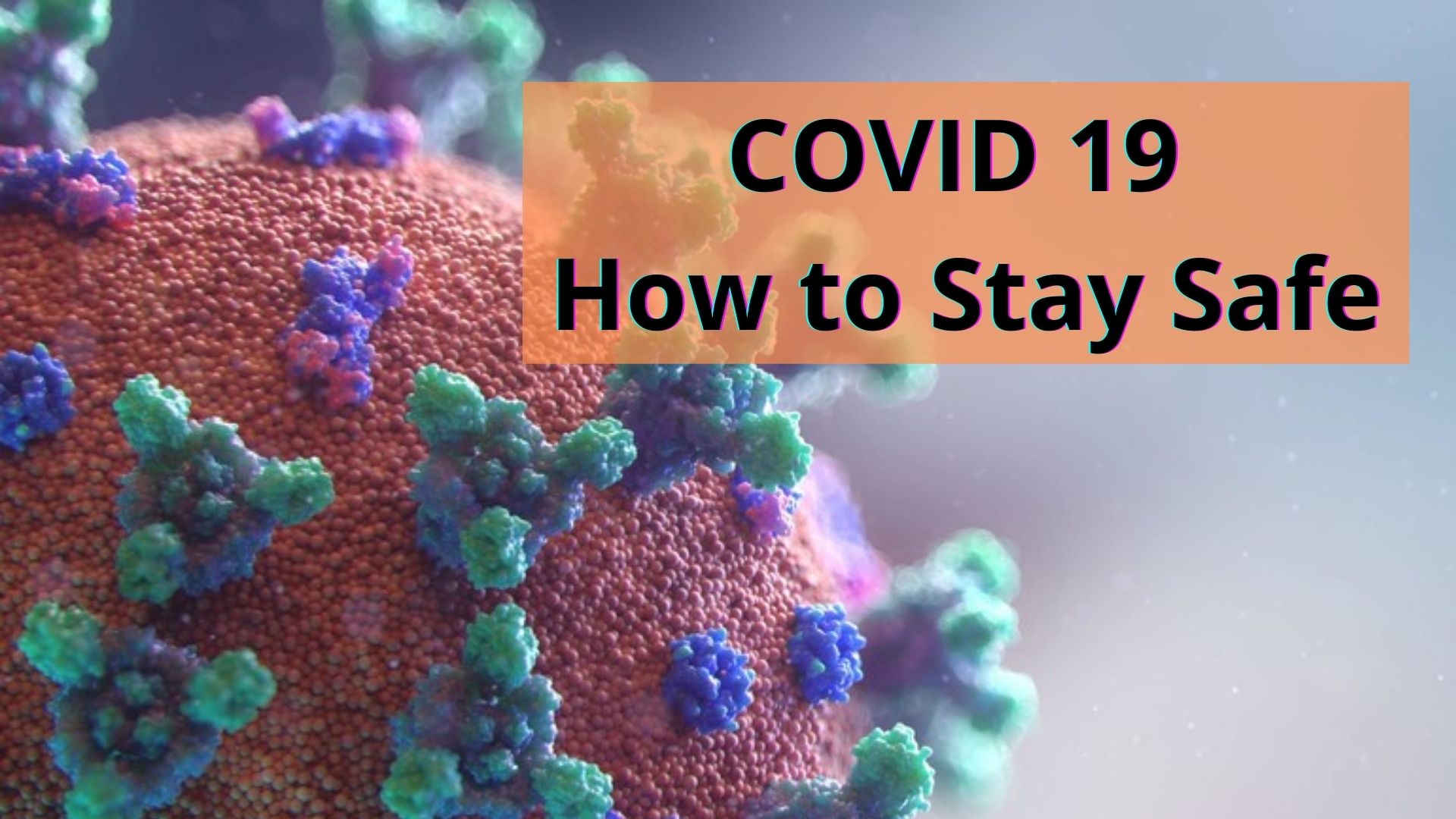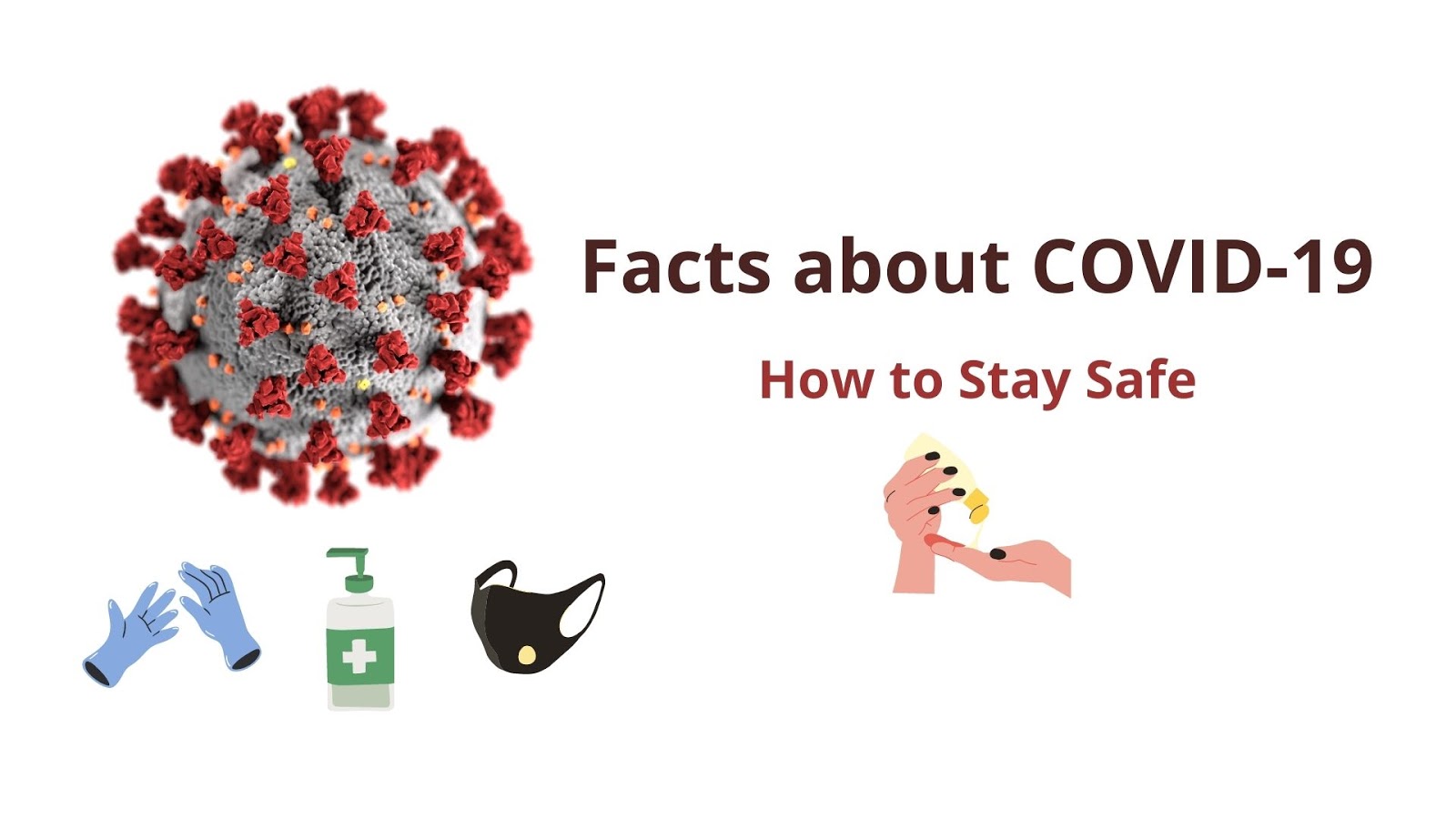How to Stay Safe

With the outbreak of global coronavirus, there is increasing fear among people about getting infected. People are seeking information online on what to do to protect and prevent the virus. With each passing day, we are getting more and more aware of COVID-19. The pandemic started over ten months ago, but we are still trying hard to curtail the disease.
In this blog post, we will discuss some facts and guidelines you need to know about COVID 19 based on official sources, like the World Health Organization (WHO), the Centers for Disease Control and Protection (CDC), and the American Red Cross.
What is Severe Acute Respiratory Syndrome Coronavirus-2 (SARS-CoV-2)?
Coronaviruses are viruses generally present in animals, and some of them are known to infect humans. Though bats are considered as the natural habitat of these viruses, yet the virus resides in many other animals as well.
SARS-CoV-2 is the virus that causes the 2019 novel coronavirus. The disease is called COVID-19. The SARS-CoV-2 is a new strain of coronavirus that has not been previously identified in humans.

Mode of Transmission
Though animals were the source of this disease, now we are seeing human to human transmission. The WHO believes that the virus can spread mainly via small respiratory droplets through sneezing, coughing, or when people interact with each other for some time in close proximity. You may get infected by inhaling these droplets or by touching the contaminated surface and touching your mouth, eyes, and nose with the same hands.
The virus can survive on any surface for several hours to days; however, viable viruses decline over time, reducing infection risk. The incubation period of COVID 19 is estimated as one to fourteen days. As we know, the virus can be transmitted from people even before they show any symptoms. However, there are many uncertainties when it comes to transmission of infection from an asymptomatic person.
Based on the latest WHO guidelines, we can say there are three modes of transmission (1):
Contact and Droplet Transmission
Transmission of the virus that occurs through direct, indirect, or close contact with an infected person’s saliva when he coughs, sneezes, talks, or sings is called contact and droplet transmission. When you are in close contact, that is within 1 meter with an infected person, respiratory droplets can reach your mouth, nose, and eyes. Also, you can get infected by touching a contaminated surface, which is called contact transmission.
Airborne Transmission of SARS-CoV-2
Airborne transmission occurs when the disseminated aerosols remain infectious when they are dispersed in the air over a distance and time. According to WHO, airborne transmission of COVID 19 can occur during some medical procedures that generate aerosols. The WHO is still evaluating the possibility of airborne transmission in indoor settings with poor ventilation.
Fomite Transmission
Respiratory droplets of an infected person can contaminate surfaces. These contaminated surfaces are called fomites. Viable SARS-CoV-2 virus can be found on fomite surfaces for hours to days, depending on the surrounding environment. Transmission of infection can occur through these surfaces when you touch these surfaces, followed by touching your mouth, nose, and eyes.
When a COVID 19 Patient can Spread the Infection?
Evidence suggests that SARS-CoV-2 RNA can be detected in people, 1-3 days before the onset of symptoms. Which means a person can spread the infection before he experiences any symptoms. An asymptomatic person may remain positive for 1 to 2 weeks, and with mild symptoms, it is up to 3 weeks. If the patient is having a severe infection, the time range of staying positive gets longer.
During mild symptoms, the WHO advises to self isolate for 8 to 9 days after the onset of symptoms. Presently we have limited evidence on the possible duration of viable virus shedding from an infected person.
How to Protect Yourself From COVID 19?
We have been following the regulations set by the health officials by and large. One of the most common guidelines to be followed is to wear a mask. The CDC recommends people wear cloth masks where it is difficult to maintain the social distance. This would help in slowing the spread of the virus even when the person is asymptomatic (2).
The WHO has prescribed specific guidelines; one must follow to stay safe and avoid being infected while doing day-to-day activities.
- The CDC recommends the usage of soap and water to clean your hands regularly. In case you are using the sanitizer, it should contain “at least 60% alcohol.”
- Disinfect the surfaces — such as kitchen platforms and work desks — frequently with disinfectant.
- Make a practice to clean your work surfaces and objects that are in constant use, like your phones, tabs, and computer keyboards.
- Limit going to the crowded areas when out for purchases. People over 60 years and the ones with underlying health issues should refrain from going out as much as possible.
- Maintain social distancing and avoid coming into close contact with people who are displaying flu-like symptoms, coughing, and sneezing.
- Most of the health websites are posting a regular update on the COVID -19 situation. Get accurate information from the Pan American Health Organization and WHO websites (3) (4).
- The American Red Cross has put a caution against touching the mouth, nose, and eyes when you are out.
- Also, the CDC suggests administering the flu vaccine to prevent other seasonal respiratory infections.
What to do if you Develop Flu-Like Symptoms?
Even after your best attempts to stay healthy and virus-free, you may experience flu-like symptoms. In such condition, consider following these steps to ensure you are handling the situation well:
- Make a practice to cough or sneeze into your elbow and use a tissue to wipe it clean. Discard the tissue immediately and sanitize your hands.
- If you feel sick, stay home and call your doctor or a local health practitioner and discuss your symptoms.
- If you experience shortness of breath or breathing trouble, call your doctor immediately for assistance.
- When you show signs of illness, isolate yourself, stay home, eat and sleep separately, and use separate utensils.
The Bottom Line
Every day is a new revelation about the COVID-19 virus. The awareness has been created in public about how to deal with the virus. Understand this infection and follow the above-mentioned guidelines while stepping out for work, for a walk, or to buy essentials.
The world is opening up, and hence hundreds of scientists have conveyed to the WHO to update their guidance on the risks of airborne spread of COVID-19. The Health officials formerly thought COVID-19 was spreading through large respiratory droplets, but the latest research indicates the virus spreads readily through much smaller particles that hang in the air for hours and are inhaled. It is essential to wear face masks and avoid crowded places.